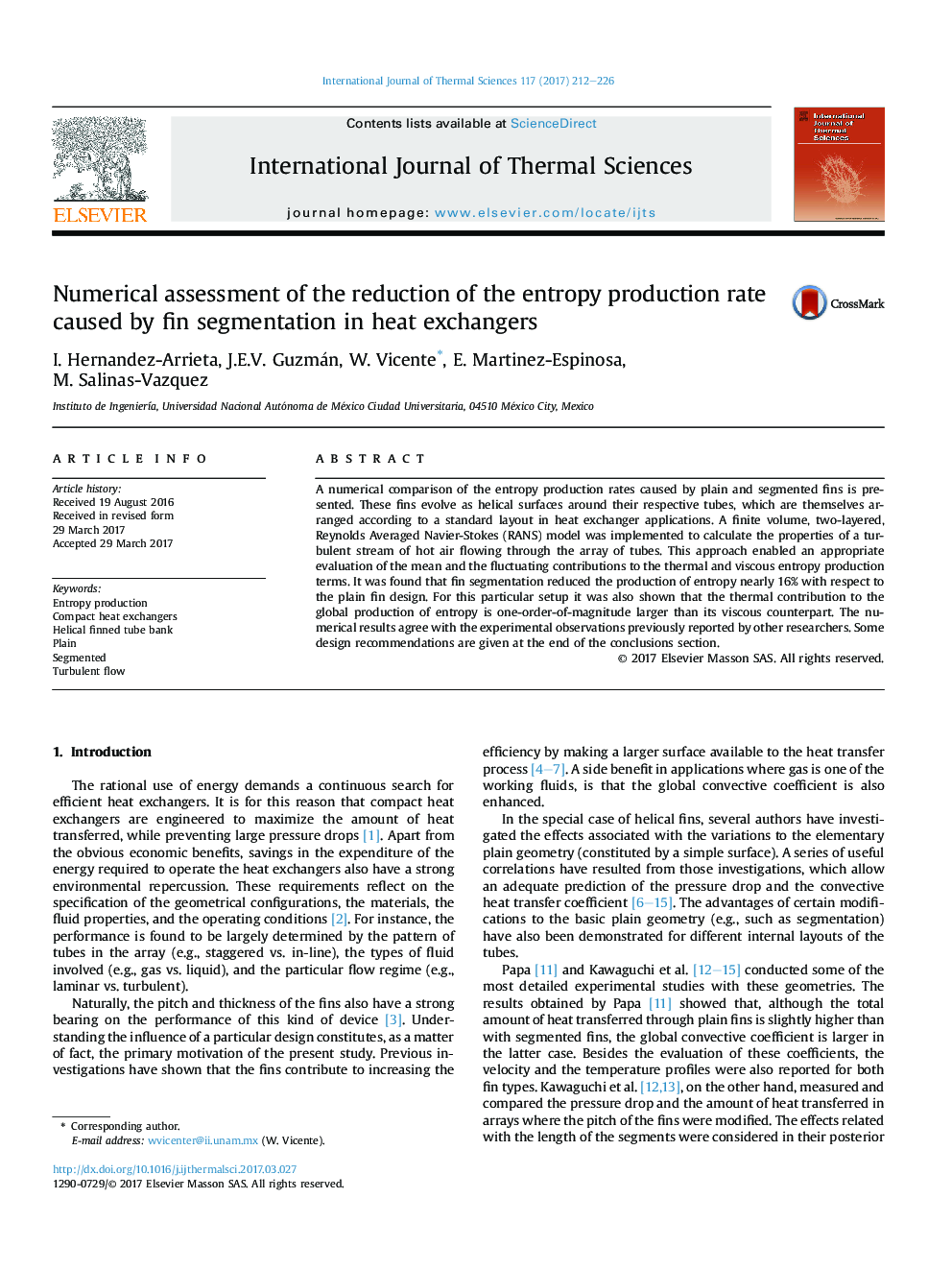| Article ID | Journal | Published Year | Pages | File Type |
|---|---|---|---|---|
| 4995401 | International Journal of Thermal Sciences | 2017 | 15 Pages |
Abstract
A numerical comparison of the entropy production rates caused by plain and segmented fins is presented. These fins evolve as helical surfaces around their respective tubes, which are themselves arranged according to a standard layout in heat exchanger applications. A finite volume, two-layered, Reynolds Averaged Navier-Stokes (RANS) model was implemented to calculate the properties of a turbulent stream of hot air flowing through the array of tubes. This approach enabled an appropriate evaluation of the mean and the fluctuating contributions to the thermal and viscous entropy production terms. It was found that fin segmentation reduced the production of entropy nearly 16% with respect to the plain fin design. For this particular setup it was also shown that the thermal contribution to the global production of entropy is one-order-of-magnitude larger than its viscous counterpart. The numerical results agree with the experimental observations previously reported by other researchers. Some design recommendations are given at the end of the conclusions section.
Related Topics
Physical Sciences and Engineering
Chemical Engineering
Fluid Flow and Transfer Processes
Authors
I. Hernandez-Arrieta, J.E.V. Guzmán, W. Vicente, E. Martinez-Espinosa, M. Salinas-Vazquez,
